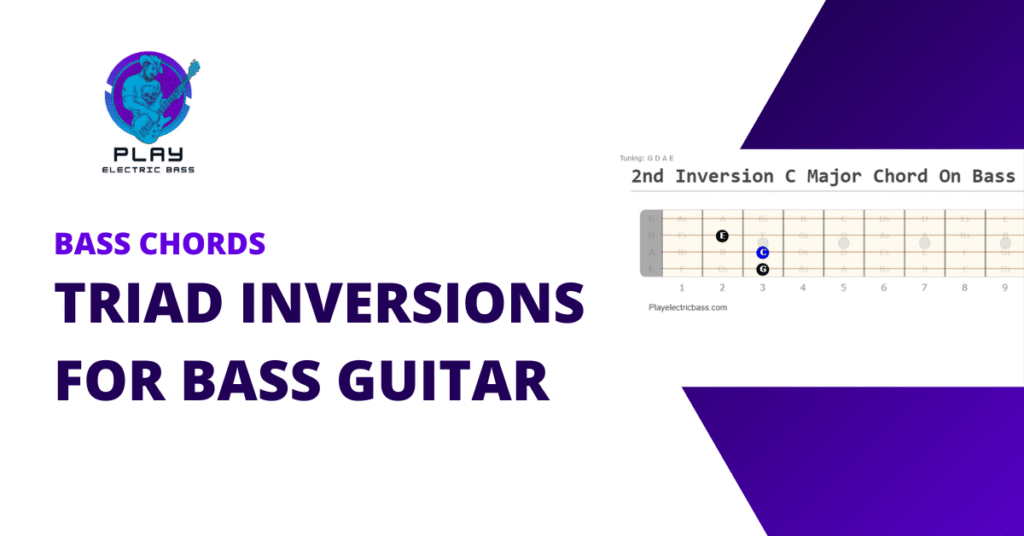This is a triad inversions bass guitar lesson that will teach you:
- What a triad inversion is
- How to invert triads on the bass
- An exercise to help you memorize triad inversions and arpeggios across the fretboard
Dive in, and you’ll be playing inversions within minutes.
Table of Contents
What are triad inversions on bass guitar?
A triad is a three-note chord built from a root note, a variation of the third, and a variation of the 5th.
For example, if you play a C major triad, it has the notes:
- C (the root note, 1)
- E (the major 3rd)
- G (the perfect 5th)
A triad inversion is when a note other than the root note, such as “E” or “G” in the C major chord, is played in the lowest position of the chord.
In the example below, the 5th (E) is in the bass position.
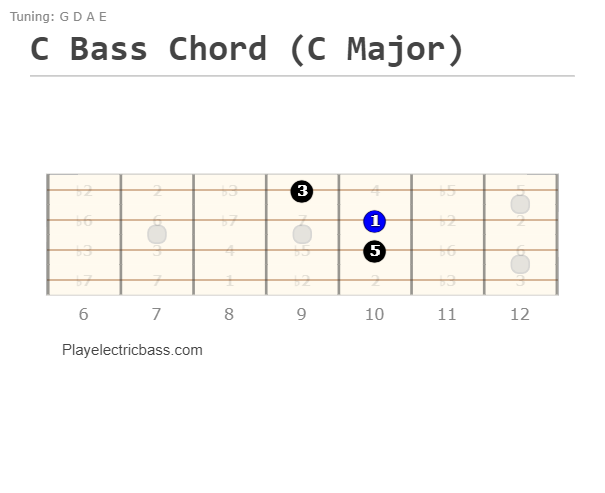
Inverting the chord changes its sound, and it gives you more freedom and options as an accompanist, composer, and improviser.
The 3 Triad Inversions (C Major Example)
Since a triad has 3 degrees (3 notes), that means it has a root position and 2 inversions.
With the C major triad, this gives you:
Root position:
The root position means the root note (1) is the lowest note in the triad, represented by the formula 1-3-5.
Notes: C-E-G
Bass Note: C

1st inversion:
The 1st inversion means the major 3rd is the lowest note in the triad, meaning the root note is moved up one octave, represented by the formula 3-5-1.
Notes: E-G-C
Bass Note: E
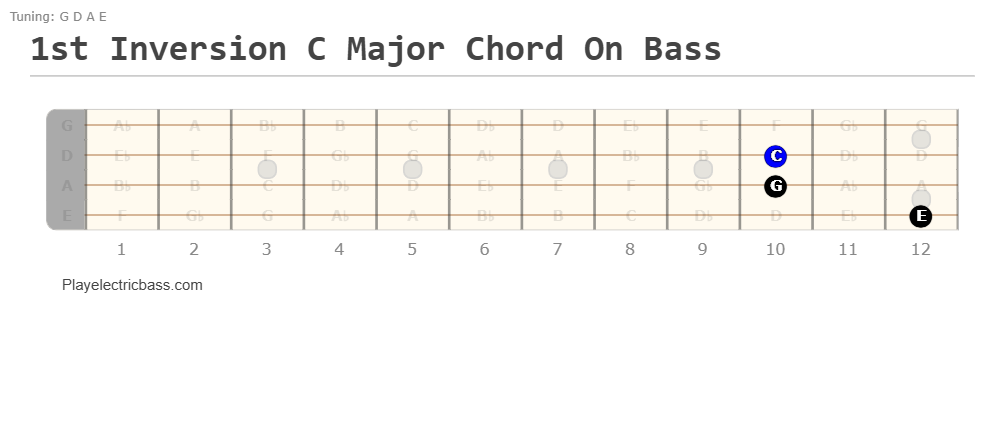
2nd inversion:
The 2nd inversion means the perfect 5th is the lowest note in the triad, meaning the 3rd is moved up one octave, represented by the formula 5-1-3.
The 2nd inversion happens when the root note is moved up one octave to put the major 3rd in the bass of the triad.
Notes: G-C-E
Bass Note: G
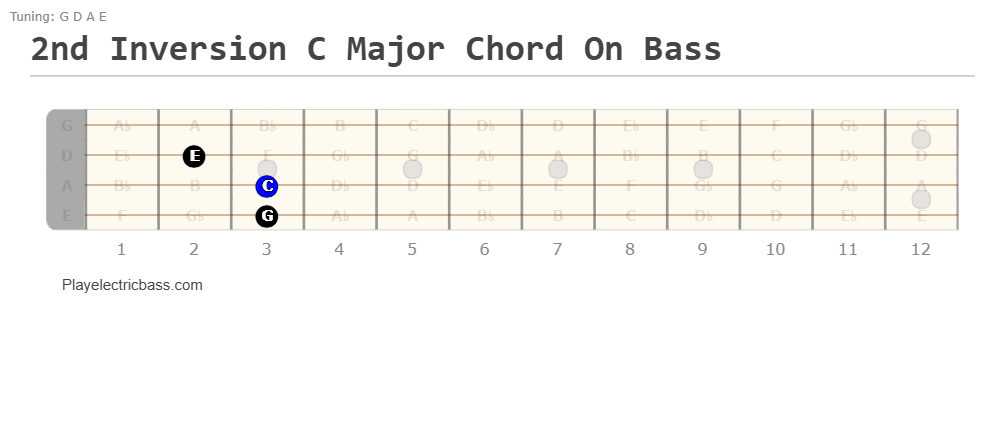
Why Triad Inversions Matter for Bassists
As a bassist, you can use inversions to:
- Pick chord shapes more intentionally, based on your current position on the fretboard
- Build inverted arpeggios across the fretboard
- Easily construct and play walking bass lines
How to Practice Triad Inversions on Bass
To practice triad inversions on bass, start by memorizing and playing the 3 inverted C major chord shapes: Root position, 1st inversion, and 2nd inversion.
From there, practice the inversion with different root notes. B and D will be the easiest root notes to move to, because they’re close the the root note, C.
Also, remember to practice inversions on both sets of 3 strings on the bass: E-A-D, and A-D-G.
Last, practice by playing inverted triads as arpeggios, instead of playing the notes in harmony.
Triad inversion bass exercise (major and minor)
Here’s a tab showing the triad inversions for C major, D major, C minor, and D minor.
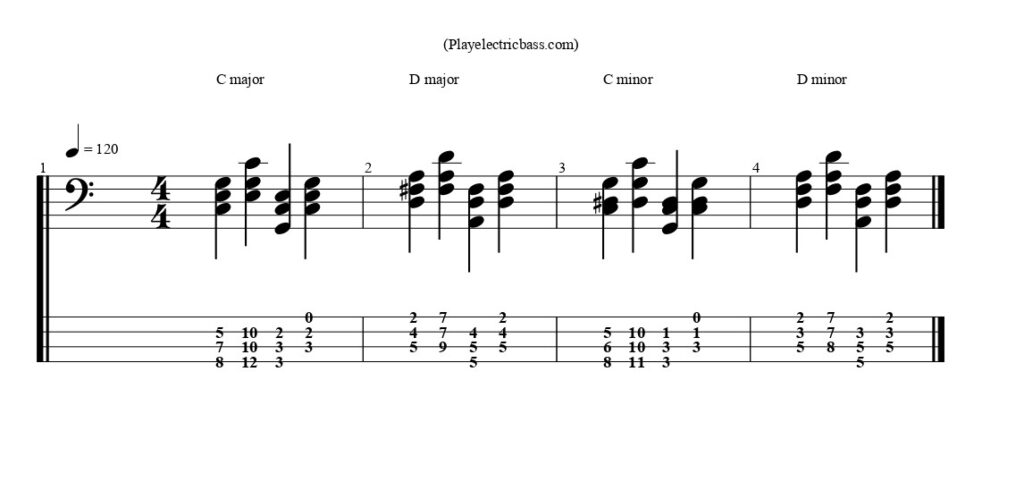
What to Learn Next
Learning how to play and use triad inversions will open your entire bass neck, and make it easier for you to play with other musicians.
From here, I suggest learning how to play 7th chords on the bass. They’re another fundemental chord type, and you can invert them as well.
Thanks for reading!
If you have any questions, feel free to ask them in my free bass community on Facebook.

